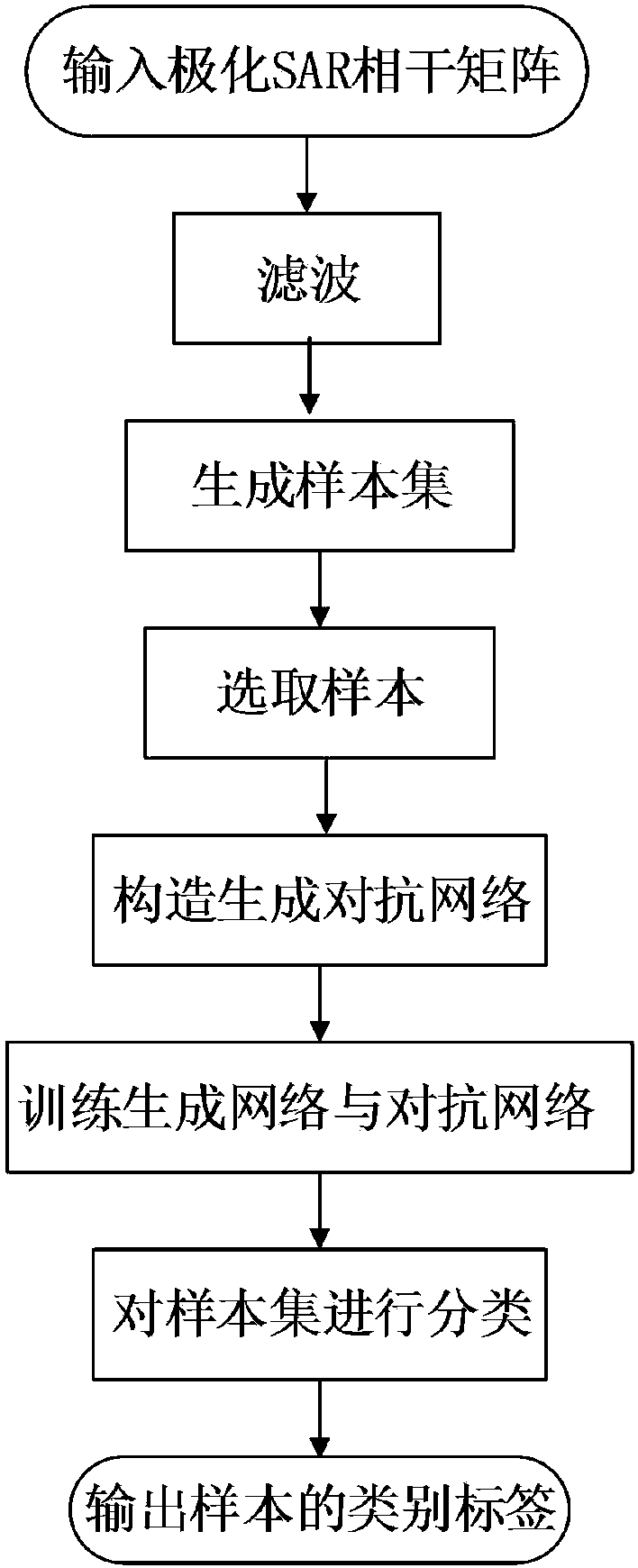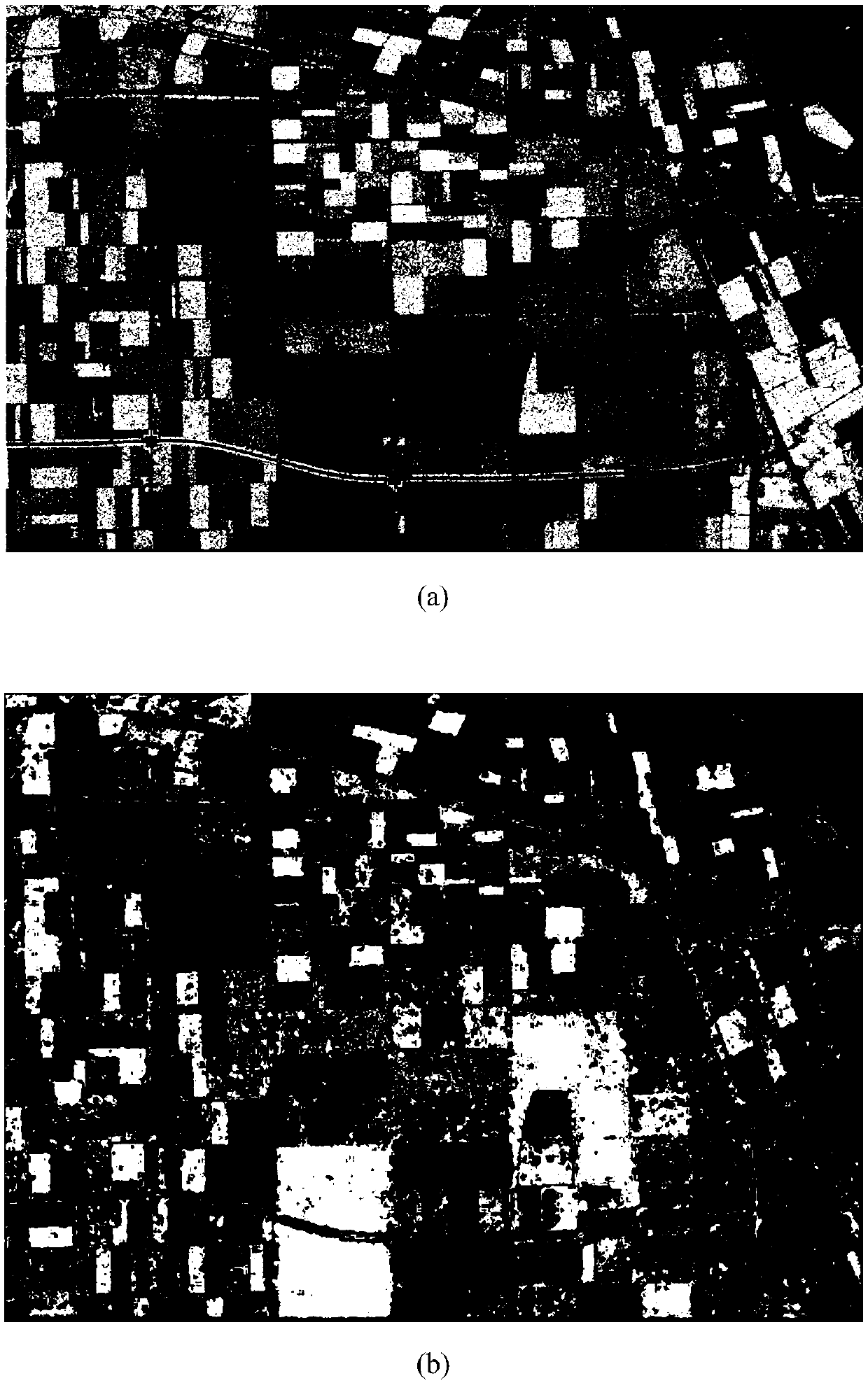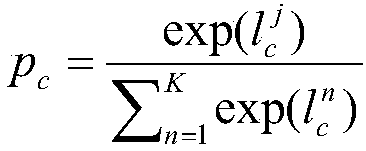Generative and adversarial network-based polarimetric SAR image classification method
A classification method and network technology, applied in the field of image processing, can solve the problems of high requirement for richness of polarimetric SAR image information features, large amount of calculation, classification effect dependent on data expression form, etc., to achieve improved classification effect and strong adaptability Effect
- Summary
- Abstract
- Description
- Claims
- Application Information
AI Technical Summary
Problems solved by technology
Method used
Image
Examples
Embodiment Construction
[0039] The present invention will be further described below in conjunction with the accompanying drawings.
[0040] refer to figure 1 , the concrete steps that the present invention realizes are as follows.
[0041] Step 1, input the coherence matrix of the polarimetric SAR SAR image to be classified.
[0042] Step 2, filtering.
[0043] A Lee filter with a filter window size of 7×7 is used to filter the coherent matrix to obtain the denoised coherent matrix.
[0044] Step 3, generate a sample set.
[0045] Extract the 9-dimensional feature from the denoised coherence matrix as a sample, and generate a sample set from all the samples in the denoised coherence matrix.
[0046] In the denoised coherence matrix, the step of extracting a 9-dimensional feature as a sample is: respectively extracting three elements of the main diagonal in the coherence matrix, the real part and the three elements of the upper triangle of the main diagonal The imaginary part uses the extracted ...
PUM
 Login to View More
Login to View More Abstract
Description
Claims
Application Information
 Login to View More
Login to View More - R&D
- Intellectual Property
- Life Sciences
- Materials
- Tech Scout
- Unparalleled Data Quality
- Higher Quality Content
- 60% Fewer Hallucinations
Browse by: Latest US Patents, China's latest patents, Technical Efficacy Thesaurus, Application Domain, Technology Topic, Popular Technical Reports.
© 2025 PatSnap. All rights reserved.Legal|Privacy policy|Modern Slavery Act Transparency Statement|Sitemap|About US| Contact US: help@patsnap.com



